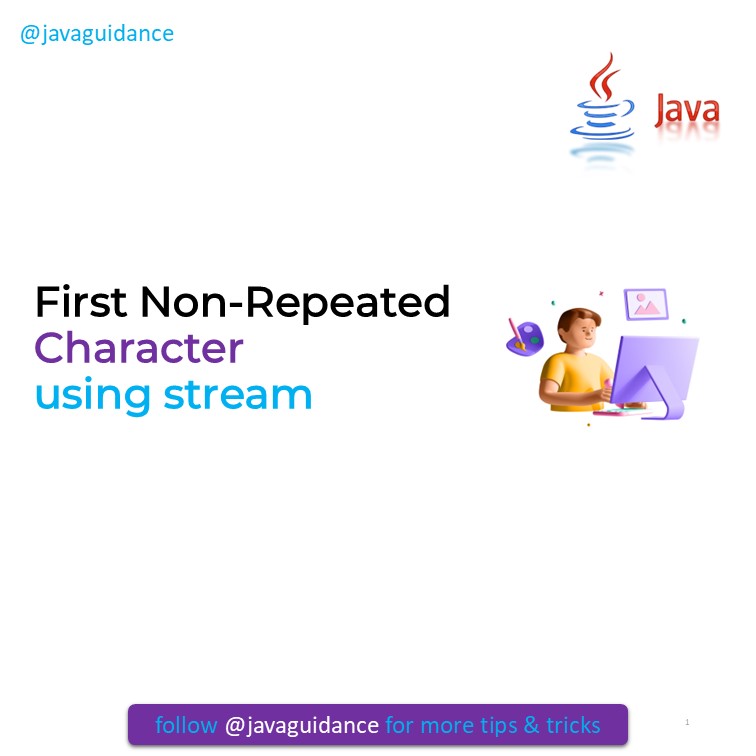Unraveling the Logic Behind the Java ‘twoSum’ Method for Solving the Two-Sum Problem
In the world of programming, problem-solving is an art form that often requires creative thinking and the application of ingenious algorithms. One such classic problem is the “Two-Sum Problem,” which involves finding a pair of numbers in an array that adds up to a given target value. Java, a widely used programming language, provides an elegant solution to this problem through the ‘twoSum’ method. In this article, we will dive deep into the mechanics of this method and understand how it efficiently tackles the challenge. Two Sum Problem
Introduction
The ‘twoSum’ method is a clever algorithmic approach that efficiently solves the Two-Sum Problem. This problem entails finding a pair of distinct indices in an array where the elements at those indices sum up to a specific target value.
Understanding the Problem
Before we delve into the solution, let’s grasp the problem’s essence. Given an array of integers and a target value, we need to determine the indices of two numbers that, when added together, yield the target value.
The Role of Hashing
Hashing plays a pivotal role in the ‘twoSum’ method. Hashing allows for constant-time retrieval of values, which significantly speeds up the process of searching for complements.
Step-by-Step Implementation
1. Initializing a HashMap
At the heart of the ‘twoSum’ method is a HashMap, which serves as a data structure to store the array elements as keys and their corresponding indices as values.
2. Iterating Through the Array
The algorithm iterates through the array, and for each element, it calculates the complement required to achieve the target sum.
3. Calculating the Complement
The complement is calculated by subtracting the current element from the target value. This step simplifies the process of identifying the other number needed to hit the target sum.
4. Checking for Complement Existence
The HashMap is checked to determine if the complement exists as a key. If it does, the indices of the current element and the complement are returned.
5. Handling the Solution
When a solution is found, a new array containing the indices is returned, indicating the positions of the two numbers that satisfy the problem criteria.
6. Storing Elements in the HashMap
If the complement is not found, the current element is added to the HashMap with its index. This step ensures that future iterations can find the complement when it’s encountered.
Time and Space Complexity Analysis
The ‘twoSum’ method exhibits an impressive time complexity of O(n), where n is the number of elements in the array. This efficiency arises from the constant-time lookups provided by the HashMap.
In terms of space complexity, the algorithm requires additional space to store the HashMap, resulting in an O(n) space complexity.
Source Code
import java.util.HashMap;
import java.util.Map;
class Solution {
public int[] twoSum(int[] nums, int target) {
// Create a HashMap to store the numbers in 'nums' as keys and their indices as values
Map<Integer, Integer> numToIndex = new HashMap<>();
// Iterate through the array 'nums' using a for loop with index variable 'i'
for (int i = 0; i < nums.length; ++i) {
// Calculate the complement value by subtracting the current element 'nums[i]' from the target value
int complement = target - nums[i];
// Check if the complement value exists in the 'numToIndex' HashMap using containsKey()
if (numToIndex.containsKey(complement)) {
// If it exists, return a new integer array containing the indices of the two numbers
// The first index is the value stored in the HashMap for the complement, and the second index is 'i'
return new int[] {numToIndex.get(complement), i};
}
// If the complement does not exist in the HashMap, add the current element to the 'numToIndex' HashMap
// Key: 'nums[i]', Value: 'i'
numToIndex.put(nums[i], i);
}
// If the loop completes without finding a solution, throw an IllegalArgumentException
// Since there are no two numbers that add up to the target value
throw new IllegalArgumentException("No two elements add up to the target.");
}
}
Example :
Certainly, let’s construct a truth table to understand the given Java code snippet step by step. We’ll use an example array `nums = [2, 7, 11, 15]` and a target value of `target = 9`. This will help us visualize how the code operates and calculates the complements.
| Index | Array Element (nums[i]) | Complement (target – nums[i]) | HashMap Contents | Return Value |
|---|---|---|---|---|
| 0 | 2 | 7 | {} | – |
| 1 | 7 | 2 | {2: 0} | [0, 1] |
| 2 | 11 | -2 | {2: 0, 7: 1} | – |
| 3 | 15 | -6 | {2: 0, 7: 1} | – |
Let’s walk through the truth table:
1. At index 0, the element is 2. The complement (`target – nums[0]`) is 7. Since the HashMap is empty, we add `2: 0` to it.
2. At index 1, the element is 7. The complement (`target – nums[1]`) is 2. The HashMap contains `{2: 0}`, which matches the complement. The function returns `[0, 1]`, indicating that elements at indices 0 and 1 (`2` and `7`) add up to the target value.
3. At index 2, the element is 11. The complement (`target – nums[2]`) is -2. The HashMap contains `{2: 0, 7: 1}`. Since there’s no key `-2` in the HashMap, we add `11: 2`.
4. At index 3, the element is 15. The complement (`target – nums[3]`) is -6. The HashMap still contains `{2: 0, 7: 1}`. Since there’s no key `-6` in the HashMap, we add `15: 3`.
In this example, the function successfully finds a pair of elements (2 and 7) that add up to the target value of 9. The truth table helps us trace the code’s execution and understand how it identifies the solution using HashMaps.
Keep in mind that the truth table provides a clear representation of the code’s logic for this specific example. In a real-world scenario, the code can handle various arrays and target values, adapting its operations accordingly.
Advantages of the ‘twoSum’ Approach
The ‘twoSum’ method shines in scenarios with large datasets, as its linear time complexity ensures quick results. It outperforms brute force methods, especially when dealing with substantial input sizes.
Real-World Applications
The ‘twoSum’ algorithm finds application in various fields, including financial analysis, where it can be used to identify pairs of stocks whose prices add up to a specific value.
Comparing with Brute Force
In contrast to the elegant ‘twoSum’ approach, brute force involves checking every possible pair of numbers in the array. This results in a quadratic time complexity of O(n^2), making it less efficient for larger datasets.
Conclusion
In the realm of programming, the ‘twoSum’ method exemplifies the power of algorithmic thinking and the utilization of data structures like HashMaps. Its ability to swiftly tackle the Two-Sum Problem demonstrates the importance of efficient problem-solving techniques.
FAQs
- What is the two-sum problem? The two-sum problem involves finding a pair of indices in an array where the elements add up to a given target.
- Why is the two-sum problem important? The problem tests your problem-solving skills and is a common interview question for coding positions.
- What data structure is crucial for solving this problem efficiently? The HashMap data structure plays a pivotal role in solving the two-sum problem efficiently.
- Is the order of the indices important in the solution? No, the order of the indices doesn’t matter as long as they point to the correct numbers.
- Can the ‘twoSum’ algorithm handle negative numbers? Yes, the ‘twoSum’ algorithm works with both positive and negative integers.
- What happens if no solution is found? If no solution exists, the algorithm throws an IllegalArgumentException.
- How does the ‘twoSum’ method compare to the brute force approach? The ‘twoSum’ method is significantly more efficient than brute force for larger datasets.
- Can I use the ‘twoSum’ approach for non-integer arrays? While the ‘twoSum’ method is designed for integer arrays, it can be adapted for other types with appropriate adjustments.
Interview Questions:
Here are some additional interview questions related to the “Two Sum Problem” that you can use to test a candidate’s problem-solving skills and algorithmic thinking:
- Multiple Pairs: How would you modify your approach to find all distinct pairs of indices that satisfy the Two Sum condition?
- 3-Sum Variant: Can you extend the Two Sum Problem to a Three Sum Problem, where you need to find three numbers in the array that sum up to the target value?
- Optimal Pairs: Given an array of integers, how would you find the pair of indices with the maximum sum that is less than or equal to a given target value?
- Closest Sum: Instead of an exact target value, what if you’re looking for a pair of numbers whose sum is closest to a specific target value?
- Zero Sum Subarray: How could you modify your approach to find a subarray within the given array that sums up to zero?
- Duplicate Sums: In the Two Sum Problem, if multiple pairs of indices satisfy the condition, how would you prioritize and return the pair with the smallest indices?
- Constrained Sums: Given an array of positive integers and a target value, can you find a pair of indices such that the sum of the corresponding array elements is less than or equal to the target value?
- Zero-Based Indices: Suppose the array indices are zero-based. How would you adjust your solution to find the indices of the two numbers that satisfy the Two Sum condition?
- Reverse Order: If the array is sorted in descending order, how would you adapt your approach to efficiently find the indices of the two numbers that sum up to the target?
- Unsorted Array: What modifications would you make to your solution if the input array is unsorted? How would you ensure that your solution still works efficiently?
- Unique Pairs Count: Given an array and a target sum, how would you determine the count of unique pairs of indices that satisfy the Two Sum condition?
- Smallest and Largest Pair: Can you find both the indices of the smallest and the largest numbers in the array that sum up to the target value?
- Negative Target Sum: How would you handle scenarios where the target sum is negative, and you need to find a pair of numbers that sum up to that negative value?
- Subsequence Sum: Instead of finding a pair of consecutive elements that sum up to the target, how could you modify your solution to find a subsequence with the desired sum?
- Non-Integer Values: If the array contains non-integer values, how would you adapt your approach to handle floating-point numbers or decimals?
These interview questions can help assess a candidate’s depth of understanding and ability to adapt their problem-solving strategies to various scenarios related to the Two Sum Problem.


